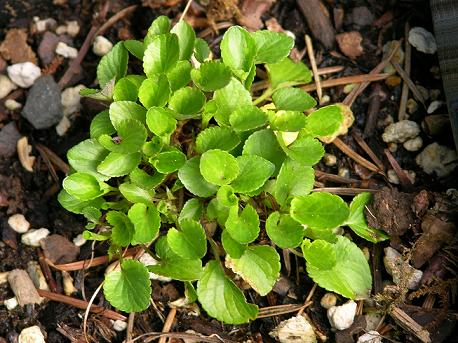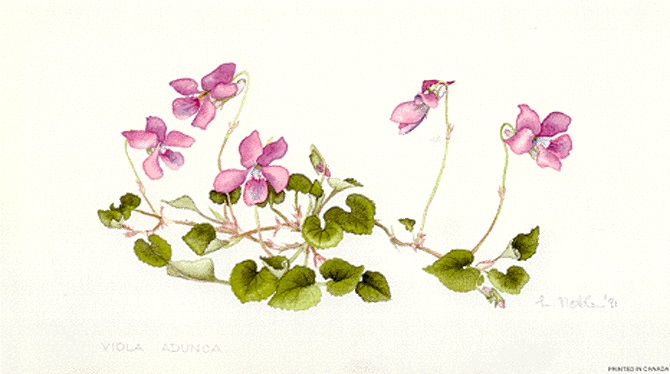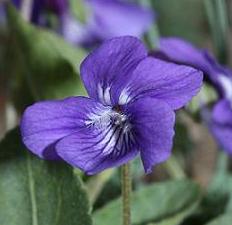|
|
|
Hansen's Northwest Native Plant Database |
|
|
|
Viola adunca (Western Dog Violet, Hookedspur Violet, Early blue Violet, Western Long Spurred Violet)
|
Photo above from the U.S. Forest Service |
||||||||||||||||||||||||||||||
|
|||||||||||||||||||||||||||||||
|
Adunca refers to the two lower petals of this flower; it means hooked, which describes the way they protrude outward. The petals are purple and streaked with dark veins and may vary in color by region. This violet is possibly the most common one found from Alaska across the western United States as well as the upper portion of the east coast, USDA zones 1-9. Violets have become more and more popular in salads and candied for desserts, the purple color make these a nice addition to any meal. The round leaves are in a basal rosette, and the seed capsules explode allowing the plants to spread. They grow well in moist to average soil and sun to part shade. Watercolor painting, below center, is by Lyn Noble, "029 Viola Adunca." See more of her beautiful work on her website: www.botanicalart.ca. Photo below right by Walter Siegmund. |
|||||||||||||||||||||||||||||||


 |
|||||||||||||||||||||||||||||||
|
Oregon
Silverspot Butterfly This plant is the only source of food for the Oregon Silverspot Butterfly larvae and it's scarcity has resulted in this butterfly's endangered status. Read about the Butterfly Conservation Initiative program aimed at reversing the problem: www.butterflyrecovery.org/species_profiles/oregon_silverspot/
|
|
||||||||||||||||||||||||||||||
|
|||||||||||||||||||||||||||||||
|
Photos We Share!
|
|||||||||||||||||||||||||||||||
|